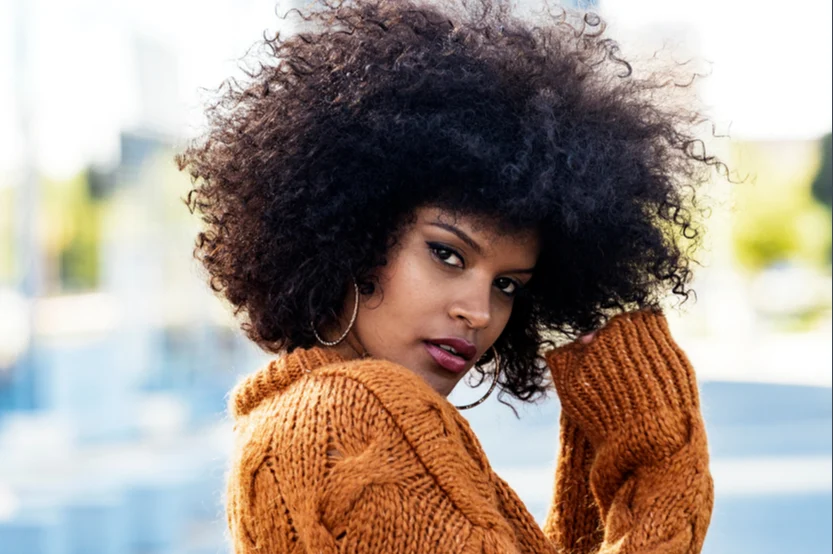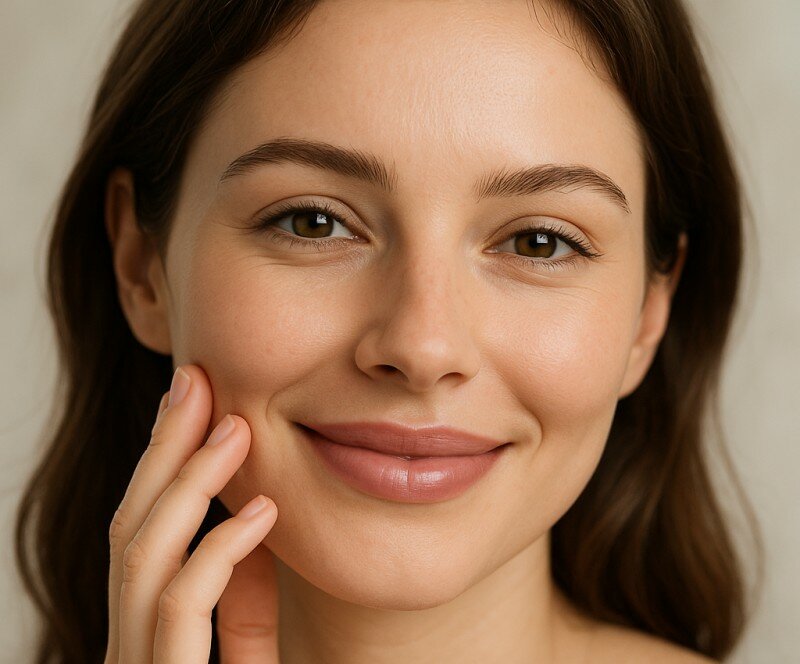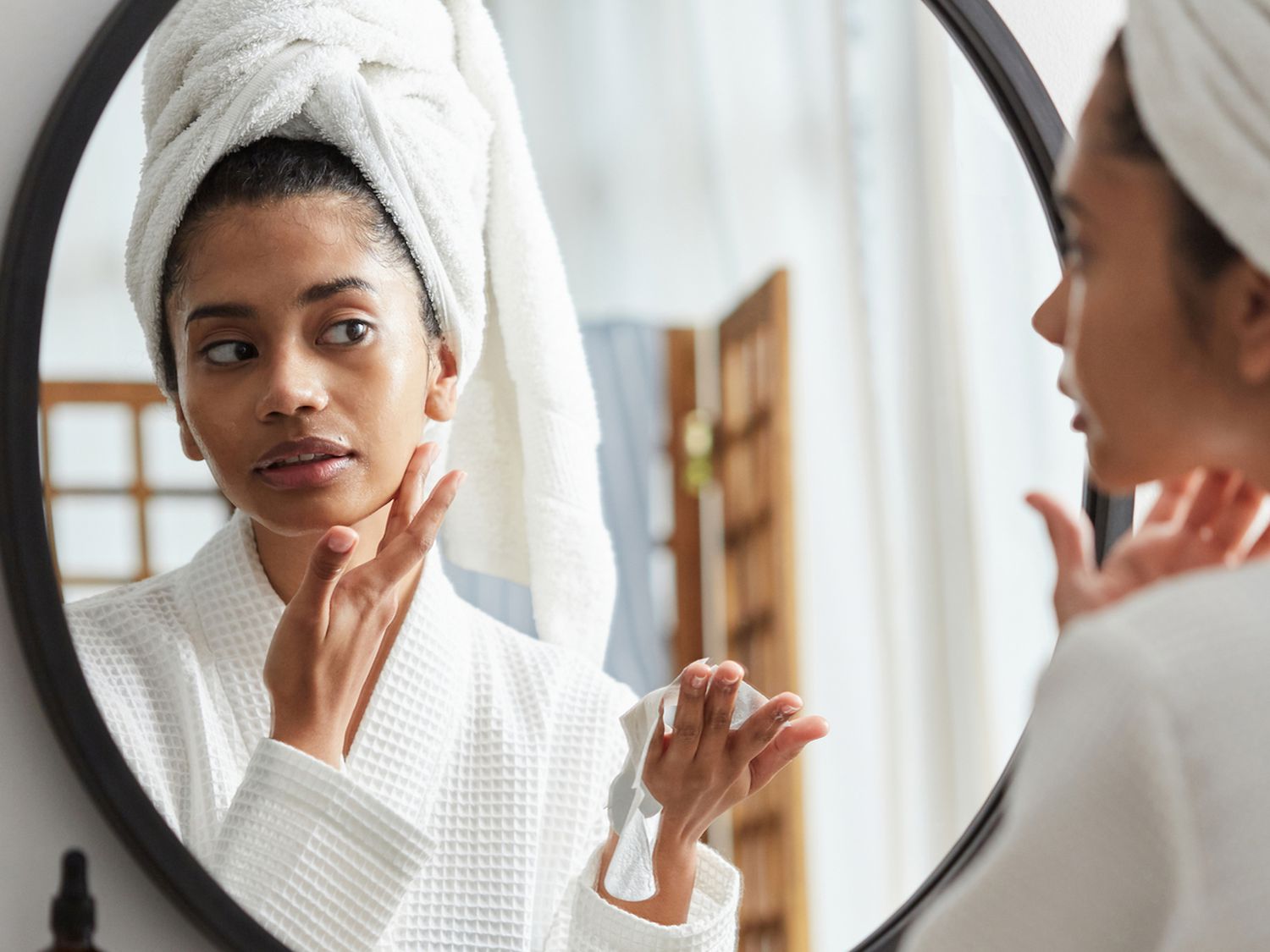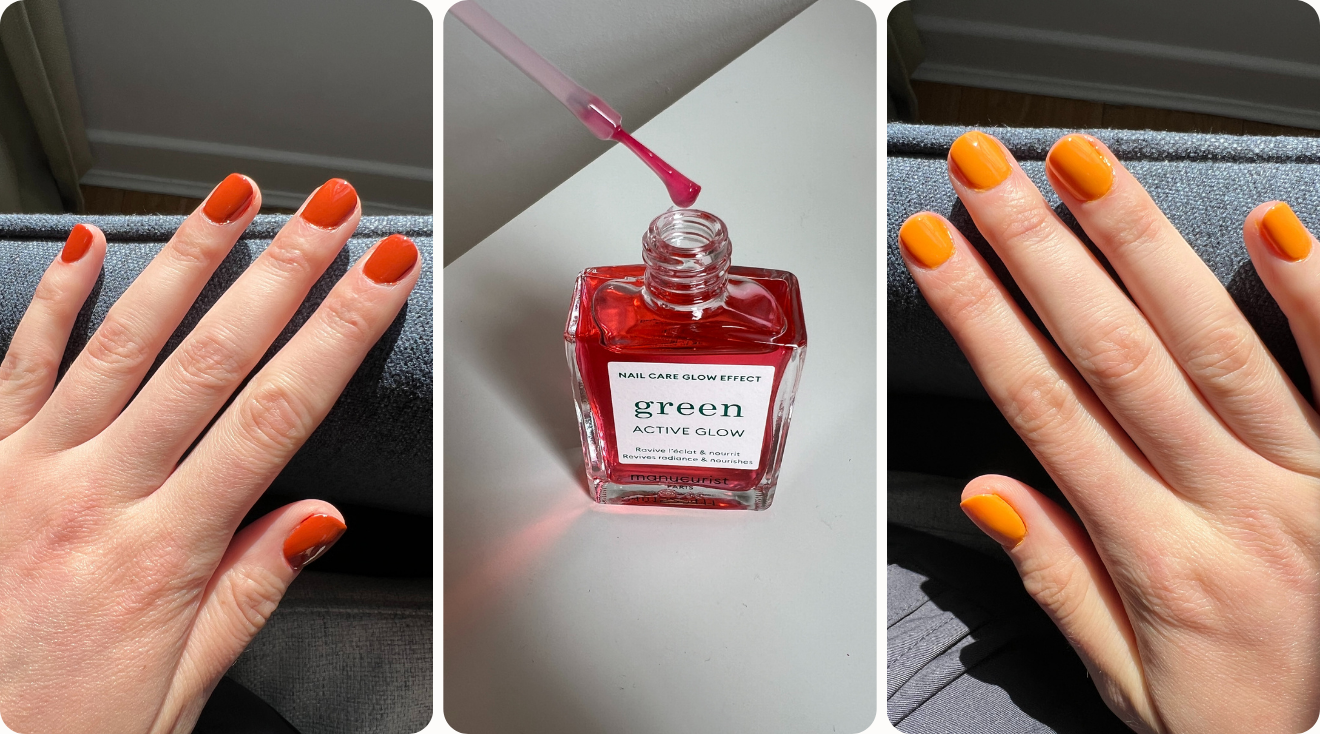Why Eco Friendly Skin Care Packaging Is Changing Beauty
Eco friendly skin care packaging uses sustainable materials like glass, bamboo, aluminum, and biodegradable options to reduce environmental impact while protecting your favorite products. Here are the main types:
- Glass containers – Infinitely recyclable, no chemical leaching
- Aluminum packaging – Lightweight, 75% of all aluminum ever made still in use
- Bamboo tubes – Fast-growing, compostable, plastic-free
- Paper/pulp options – Biodegradable, often from recycled materials
- Bioplastics – Made from plants like sugarcane or corn
- Refillable systems – Reduce packaging by 80-85%
The beauty industry produces 120 billion units of packaging annually, with most ending up in landfills. Only 9% of plastic waste gets recycled in countries like Canada, while 47% of consumers are willing to pay more for sustainable products.
This shift matters because traditional beauty packaging creates massive waste. Think about it – that empty serum bottle with mixed materials that leaves you standing in your kitchen wondering “to recycle, or not to recycle, that is the question.”
Sustainable packaging solves real problems. It protects ingredients without harming oceans. It satisfies eco-conscious shoppers who research brands before buying. And it helps companies meet environmental goals while often reducing shipping costs.
The good news? Amazing alternatives exist right now. From mycelium packaging that grows in 7 days and composts in 45 days, to aluminum that recycles infinitely, to refill systems cutting emissions by over 80%.

Eco friendly skin care packaging word roundup:
– cruelty free makeup
– natural anti aging
– shea moisture
Why Sustainable Packaging Matters
Picture this: you’re standing in your bathroom, looking at a collection of empty beauty bottles, wondering if they can actually be recycled. You’re not alone in this confusion – and that’s exactly why eco friendly skin care packaging has become such a crucial topic for beauty lovers everywhere.
The truth is, we’re facing a beauty packaging crisis that affects all of us. Every year, the beauty industry churns out billions of containers, and most of them end up creating environmental problems we can no longer ignore. But here’s the encouraging part – consumers like you are driving real change.
Latest research on consumer attitudes shows that people across all age groups genuinely care about sustainability when shopping for beauty products. Nearly half of shoppers are willing to pay more for sustainable options, and they’re actively seeking out brands that align with their values.
Environmental Problems With Traditional Beauty Packaging
Most conventional containers rely heavily on single-use plastics that create a cascade of environmental issues. Those beautiful pump bottles and dropper caps sitting on your vanity? They’re often made from mixed materials that recycling facilities simply can’t separate effectively.
Scientific research on plastic pollution reveals that only about 9% of all plastic waste has ever been successfully recycled. The remaining 91% ends up in landfills, gets incinerated, or worse – finds its way into our oceans where it breaks down into microplastics that eventually make their way back into our food chain.
Shipping emissions add another layer to the environmental impact. When beauty products travel long distances in heavy packaging, every extra gram contributes to carbon emissions. Many consumers genuinely want to recycle their beauty packaging but find themselves confused by mixed materials and unclear labeling.
Economic & Brand Advantages
Sustainable packaging isn’t just good for the planet, it’s incredibly smart business. Lightweight sustainable materials like aluminum and bamboo can dramatically reduce shipping costs. When you’re moving thousands of products, every ounce saved translates to real money saved.
Consumer loyalty represents another huge advantage. Those consumers willing to pay premium prices for sustainable products stick around longer and become genuine brand advocates. They share their favorite sustainable brands with friends and create authentic word-of-mouth marketing.
Meeting ESG goals has become increasingly important for businesses of all sizes. Sustainable packaging helps companies check these boxes while appealing to environmentally conscious investors and employees who want to work for companies that share their values.
Eco Friendly Skin Care Packaging Materials
The world of sustainable packaging materials is absolutely fascinating right now. We’re seeing innovations that would have seemed like science fiction just a few years ago – from mushroom-based containers to bottles made from sugarcane. The beauty of these materials lies in their diversity, with each one solving different problems.
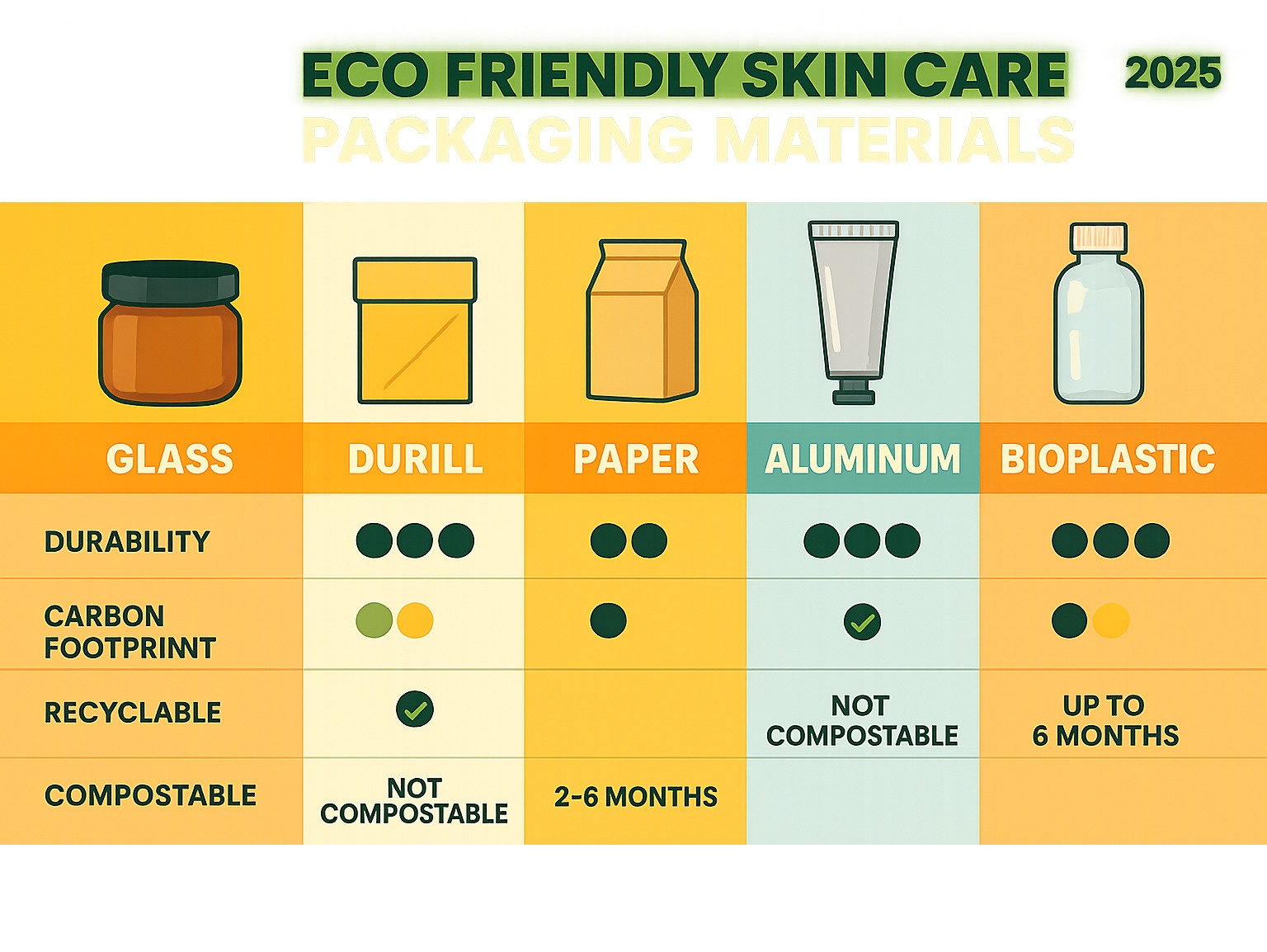
Benefits of Eco Friendly Skin Care Packaging
Eco friendly skin care packaging delivers benefits that go way beyond just feeling good about your environmental impact.
Circularity is the biggest win here. Instead of the old “make, use, toss” approach, these materials keep cycling through useful lives. Glass gets melted down and becomes new containers forever. Aluminum maintains its strength through countless recycling rounds. Compostable materials break down and feed the soil for new plant growth.
The safety factor often surprises people. Glass containers won’t react with your expensive vitamin C serum or retinol cream, keeping ingredients stable and effective. Bamboo naturally fights bacteria without any chemical treatments.
Carbon reduction happens throughout the lifecycle. Many of these materials require less energy to produce, transport more efficiently due to lighter weight, and eliminate the environmental cost of disposal.
Challenges of Eco Friendly Skin Care Packaging
Let’s be honest about the problems. Sustainable packaging isn’t always the easy choice, and understanding these challenges helps everyone make better decisions.
Supply chain complexity tops the list of headaches. Finding reliable suppliers for innovative materials can take months. Lead times are often longer, and minimum order quantities can be steep.
Infrastructure gaps create real-world problems. Your mycelium packaging might be perfectly compostable, but if your city’s composting facility doesn’t accept packaging materials, it’s headed to the landfill anyway.
Consumer education is ongoing work. Even environmentally conscious shoppers get confused. Clear labeling helps, but there’s still a learning curve.
Glass, Aluminum & Bamboo Showdown
These three materials represent the current champions of sustainable packaging, each bringing unique strengths to the table.
Glass offers best purity and infinite recyclability. It creates a perfect barrier against light, air, and moisture – crucial for protecting active ingredients. The main trade-offs are weight and fragility, which increase shipping costs.
Aluminum strikes an incredible balance between sustainability and practicality. Here’s a mind-blowing fact: 75% of all aluminum ever produced is still in use today. Aluminum containers are lightweight, infinitely recyclable, and provide excellent protection against environmental factors that degrade skincare ingredients.
Bamboo brings unique benefits as one of nature’s fastest-growing resources. It can grow three feet in a single day without pesticides, fertilizers, or replanting. Bamboo packaging is naturally antimicrobial and completely biodegradable.
Paper, Pulp & Mycelium Options
These emerging materials represent some of the most exciting innovations in packaging today.
Molded pulp packaging transforms waste into useful containers. Sugarcane bagasse, bamboo pulp, and recycled paper get pressed into custom shapes that protect products beautifully. These materials create zero microplastics and can often be composted at home.
Mycelium packaging deserves its own spotlight because it’s genuinely revolutionary. This mushroom-based material grows in just seven days and composts completely within 45 days. It’s as protective as Styrofoam but disappears harmlessly into soil.
Advanced paper options have evolved far beyond cardboard boxes. Modern paperboard containers use plant-based barrier coatings that protect products while remaining fully recyclable.

Bioplastics & Plant-Based HDPE
The plant-based plastic revolution is happening right now, offering genuine alternatives to petroleum-based materials. More info about Plastic-Free Cosmetics dives deeper into these fascinating innovations.
Sugarcane-based HDPE represents a major breakthrough in sustainable packaging. This material is chemically identical to traditional plastic HDPE but made from renewable sugarcane instead of fossil fuels. The production process is about 97% carbon neutral and actually absorbs CO2 while the sugarcane grows. Best part? It’s fully recyclable in existing plastic recycling streams.
PLA (polylactic acid) made from corn starch offers another promising path forward. This material biodegrades under proper industrial composting conditions and produces very low emissions during manufacturing.
The future of eco friendly skin care packaging lies in matching the right material to each specific use case. No single material solves every problem, but together, they’re creating a much more sustainable beauty industry.
Avoiding Greenwashing & Ensuring True Sustainability
Let’s be honest – the word “sustainable” has become beauty marketing gold. Walk down any beauty aisle and you’ll see “eco-friendly,” “natural,” and “green” plastered on everything. But here’s the thing: not all these claims are created equal.
Greenwashing is when brands make their products sound more environmentally friendly than they actually are. It’s like putting a tiny bamboo cap on a plastic bottle and calling it sustainable packaging.
The good news? You can spot authentic sustainability with a few simple checks. Real eco friendly skin care packaging comes with third-party certifications, not just pretty marketing copy. These independent organizations actually test and verify environmental claims.
Lifecycle assessments (LCAs) are another gold standard. These comprehensive studies track environmental impact from raw materials all the way through disposal. Brands that have invested in LCAs are serious about understanding their true environmental footprint.
Look for transparent labeling that clearly explains what materials are used and how to dispose of them properly. The best brands are increasingly using QR codes that link to detailed sustainability information.
Take-back programs are perhaps the strongest indicator of genuine commitment. When a brand offers to take back their packaging for proper recycling or reuse, they’re putting their money where their mouth is.
How Brands Can Prove Claims
Smart brands know that sustainability claims need backup. FSC (Forest Stewardship Council) certification ensures paper products come from responsibly managed forests. USDA Bio-Preferred certification verifies the actual bio-based content in materials.
B-Corp certification takes things even further. These companies undergo rigorous assessment of their environmental and social impact across their entire business, not just packaging.
The most trustworthy brands share specific data about their packaging impact. They’ll tell you exactly what percentage of recycled content they use, how much their carbon footprint has decreased, and what their waste diversion rates look like.
Smart Consumer Actions
You have more power than you might think to drive positive change in beauty packaging. Every purchase is essentially a vote for the kind of packaging you want to see more of.
Start by checking resin codes on plastic packaging. Those little numbers inside the recycling triangle actually matter. Numbers 1 (PET) and 2 (HDPE) are most widely recyclable.
Support refillable systems whenever you find them. Yes, the initial investment might cost more upfront, but cheaper refills save money over time while dramatically reducing packaging waste.
Proper disposal makes a huge difference in whether sustainable packaging actually achieves its environmental goals. More info about Eco-Friendly Beauty Routines provides detailed guidance on sustainable disposal practices that actually work.
Don’t underestimate the power of communicating with brands about your sustainability priorities. Companies pay close attention to customer feedback, and expressing interest in sustainable packaging can influence their future product development.
Future Trends & Innovative Solutions
The future of eco friendly skin care packaging feels like stepping into a beautiful, sustainable tomorrow. We’re witnessing innovations that seemed impossible just a few years ago becoming everyday reality.
Solid products are leading a quiet revolution by eliminating packaging altogether. Think shampoo bars that last months, solid moisturizers that melt perfectly in your hands, and waterless cleansers that pack serious cleaning power. These concentrated formulations often work better than their liquid counterparts while creating zero packaging waste.
Dissolvable sachets represent another mind-blowing innovation. These water-soluble packages literally disappear during use, leaving absolutely no trace behind.
Here’s where things get really exciting: algae-based bottles are moving from research labs into real products. These containers are made from algae that actually absorb CO2 while growing, creating packaging that’s carbon-negative.
AI-powered design optimization is helping create packaging that uses the absolute minimum materials while still protecting your precious skincare.
Refillable, Reusable & Zero-Waste Models
Refillable systems are proving they’re not just good for the environment – they’re game-changers. When beauty brands implement refill designs properly, they achieve an impressive 80-85% reduction in greenhouse gas emissions from packaging and transport.
Closed-loop systems take reusability to the next level. Brands collect your used containers, sanitize them to hospital-grade standards, and refill them for the next customer. This approach eliminates waste entirely while maintaining strict safety standards.
Concentrate pods offer another brilliant approach. You buy super-concentrated formulas in tiny packages, then mix them at home in your reusable containers. This dramatically cuts shipping weight and packaging volume while often saving you money.
Pioneer brands are showing how this works in practice. Some beauty retailers now offer in-store refill stations with strict hygiene protocols. Mail-back programs provide prepaid labels so you can return containers for professional sanitization and refilling. Subscription services deliver concentrates in compostable packaging that breaks down in your home compost bin.
Emerging Materials & Tech
The materials science behind sustainable packaging keeps surprising us with breakthrough innovations. Mycelium foam offers cushioning properties that rival synthetic foams while being completely biodegradable. This fungus-based material protects your products during shipping, then composts harmlessly in your garden.
Upcycled sugar-pulp cartons transform agricultural waste into beautiful, high-quality packaging materials. This process saves trees while creating value from materials that would otherwise be burned or thrown away.
Blockchain traceability is making packaging completely transparent. You can scan QR codes to see exactly where materials came from, how they were processed, and how to dispose of them properly.
3D printing technology enables on-demand production of custom packaging with virtually no waste. This approach eliminates overproduction and allows rapid prototyping of new sustainable designs.

Frequently Asked Questions about Eco Friendly Skin Care Packaging
Let’s tackle the most common questions we hear about sustainable beauty packaging. These are the real concerns people have when trying to make greener choices with eco friendly skin care packaging.
What makes a package truly compostable?
True compostability isn’t just about materials breaking down – it’s about breaking down safely, completely, and within specific timeframes.
Industrial composting facilities maintain temperatures between 140-160°F with carefully controlled moisture and oxygen levels. Under these conditions, truly compostable materials must break down within 180 days without leaving any toxic residues behind.
Home composting is a completely different story. Your backyard compost pile operates at much lower temperatures (90-140°F) and takes longer to work its magic. Materials labeled for home composting need to handle these gentler conditions. Look for certifications like BPI (Biodegradable Products Institute) or TUV AUSTRIA OK compost HOME.
The most important thing? Match the packaging to your actual disposal options. Even the most perfectly compostable container won’t break down properly sitting in a regular landfill.
How do I recycle pumps or droppers?
Those sleek pump bottles and neat droppers look so sophisticated, but they’re actually recycling nightmares. They combine different plastics, metals, and sometimes tiny springs – all materials that recycling facilities struggle to separate cost-effectively.
Most curbside recycling programs simply can’t handle these complex assemblies. The mixed materials require manual separation that’s not economically viable for most facilities.
But don’t despair – you have options! Specialty recycling programs like TerraCycle offer mail-back programs specifically for hard-to-recycle beauty items. Many beauty retailers also have in-store collection bins where you can drop off empties from any brand.
If you’re feeling ambitious, disassembly is your friend. Remove metal springs, separate different plastic components, and recycle each material through appropriate streams.
The easiest solution? Choose brands offering refillable systems or simpler packaging designs that avoid these mixed-material headaches entirely.
Are refill stations hygienic?
This question comes up constantly, and we understand the concern. But modern refill stations have really impressive hygiene protocols that often exceed what you’d find in regular retail environments.
Automated dispensing systems minimize human contact while UV sterilization and antimicrobial surfaces actively prevent contamination. Many systems require customers to bring thoroughly cleaned containers or purchase new ones on-site to eliminate any contamination risk.
Some of the smartest systems use sealed concentrate pods that eliminate contamination concerns entirely. You’re not dealing with open bulk products – instead, you’re getting fresh concentrates in minimal packaging that you mix at home.
Professional cleaning between uses maintains sanitary conditions, and reputable brands clearly explain their sanitization procedures. Look for systems with transparent quality control measures and established hygiene standards.
Conclusion
Eco friendly skin care packaging represents more than just an environmental trend – it’s become a powerful way for beauty lovers to make choices that actually matter. When we look at those 120 billion units of packaging produced annually, it’s easy to feel overwhelmed. But here’s the encouraging part: 47% of consumers are already willing to pay more for sustainable products, showing that collective action is building momentum.
The solutions we’ve explored prove that sustainable beauty packaging isn’t just wishful thinking. Glass containers that recycle infinitely, aluminum that maintains 75% of all ever-produced material in active use, and bamboo that grows without pesticides offer real alternatives to wasteful packaging. Even more exciting innovations like mycelium packaging that grows in seven days and composts in forty-five days show how creative solutions can solve environmental problems effectively.
Refill systems delivering 80-85% reductions in greenhouse gas emissions aren’t just impressive statistics – they’re proof that smart design can dramatically reduce environmental impact while often saving money too.
Let’s be honest – the journey toward sustainable packaging isn’t always straightforward. Supply chain challenges, infrastructure gaps, and figuring out proper disposal methods can feel confusing sometimes. But the rapid pace of innovation gives us reason for optimism. From dissolvable sachets to algae-based bottles, creative minds are developing solutions faster than many of us imagined possible.
Your individual choices create ripple effects that extend far beyond your bathroom cabinet. Supporting brands with genuine sustainability commitments, learning proper disposal methods for different materials, and embracing refillable systems when available all contribute to positive change.
The future of beauty packaging looks incredibly promising. Emerging technologies and materials are offering increasingly sophisticated solutions that don’t require compromising on product quality or aesthetic appeal.
At Beyond Beauty Lab, we’re here to help you steer this evolving landscape of sustainable beauty options with confidence. More info about Sustainable Skincare provides additional resources for making environmentally conscious beauty choices that maintain the quality and effectiveness you deserve.
The change happening in beauty packaging shows what’s possible when consumer demand meets innovative thinking. Together, we’re creating a future where taking care of ourselves and taking care of our planet go hand in hand – and that’s something worth getting excited about.




